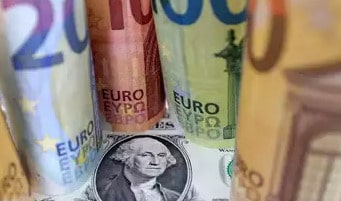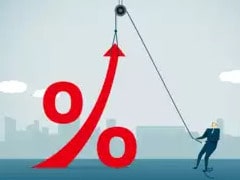India’s foreign exchange reserves have increased by USD 1.657 billion, reaching their highest level in nine months. According to the Reserve Bank of India (RBI), the country’s foreign exchange reserves stood at USD 584.550 billion as of April 9, 2023. This marks a significant increase from the previous week’s level of USD 582.893 billion.
The rise in forex reserves can be attributed to a surge in foreign portfolio investment (FPI) inflows and higher exports. The FPI inflows have been driven by improved investor sentiment following a series of positive economic reforms announced by the Indian government. Additionally, the country’s export growth has been on the rise due to a favorable global economic environment and the implementation of several export promotion schemes.
The increase in foreign exchange reserves is a positive development for the Indian economy, as it provides a cushion against external shocks and helps maintain stability in the country’s exchange rate. It also reflects the confidence of foreign investors in the Indian economy, which could lead to further inflows of foreign capital.
India’s foreign exchange reserves have been steadily increasing over the past few years, thanks to a range of policy measures taken by the RBI and the Indian government. These measures include liberalization of the foreign investment regime, simplification of foreign exchange regulations, and the implementation of several export promotion schemes.
The Indian government has been actively promoting foreign investment in the country, particularly in key sectors such as infrastructure, manufacturing, and services. In 2021, the government launched the National Infrastructure Pipeline (NIP), which aims to provide a boost to the country’s infrastructure development by attracting both domestic and foreign investment. The NIP has a total investment outlay of USD 1.4 trillion over the next five years, with a significant portion expected to come from foreign investors.
The RBI has also taken several measures to liberalize the foreign exchange regime and facilitate foreign investment in the country. In 2021, the RBI announced a slew of measures aimed at simplifying the foreign exchange regulations and promoting ease of doing business for foreign investors. These measures include liberalization of the overseas borrowing framework, simplification of the foreign investment reporting requirements, and enhancement of the limit for foreign portfolio investors in government securities.
The rise in foreign exchange reserves is also a reflection of India’s robust economic fundamentals. Despite the global economic slowdown caused by the COVID-19 pandemic, the Indian economy has shown remarkable resilience, with GDP growth rebounding strongly in the last few quarters. The country’s foreign trade performance has also been impressive, with both exports and imports registering significant growth over the past few months.
The rise in foreign exchange reserves is expected to have a positive impact on the country’s macroeconomic indicators, including inflation, interest rates, and the exchange rate. With a strong foreign exchange buffer in place, the RBI will be able to intervene in the foreign exchange market to maintain stability in the exchange rate, should the need arise.
In conclusion, the rise in India’s foreign exchange reserves is a positive development for the country’s economy, reflecting the confidence of foreign investors in the Indian growth story. The increase in forex reserves is a result of a range of policy measures taken by the RBI and the Indian government to attract foreign investment and promote export growth. With a strong foreign exchange buffer in place, India is well-positioned to weather any external shocks and maintain macroeconomic stability in the coming years.
Read More on RBI










